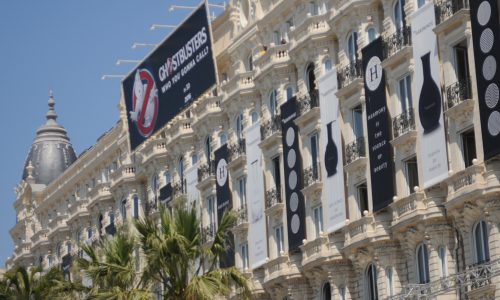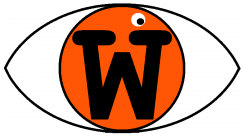After another night without enough sleep and no time for breakfast before an early film, I dashed to the Palais and hid some snacks behind a kiosk, before going through security, to get into the press screening of Sean Penn’s competition entry, The Last Face.

Returning behind the camera, Penn has chosen a powerful drama about a team of MSF-type international doctors, working with refugees and victims of war in west Africa and South Sudan. Charlize Theron plays the administrative head of the organisation while Javier Bardem is one of its most senior doctors. The film explores the tensions between Theron’s determination to change the world and Bardem’s insistence that the top priority is just to help the wounded. What they see – the violence and despair – is painful to watch and only the most hardened viewers won’t share pity for innocents who are caught up in war zones. The narrative hidden beneath the horror is a fairly standard romantic drama and it’s not always convincing, but the power of the images are sure to shake any audience.
I had a tight turnaround before the next film – just long enough, I thought, to have a snack and get back into a queue. Having retrieved my breakfast from behind the kiosk and scoffed a cereal bar, I popped to the UK Film Centre to see who was around. Almost no-one. They were no longer checking people in and out of the marquee (a colleague had previously remarked that the EU tent allowed people to come and go as they pleased, while the UK Film Centre was keeping a detailed record of everyone who entered or left) and apart from a staff member packing boxes behind the reception desk, the only other person there was the Glasgow Film Festival boss getting dressed on the terrace after a quick dip in the sea.
Thinking I had a bit of time to spare, I returned to the Grand Theatre Lumiere to check which queue was for the press and was told there were just three seats left so I had to dash straight in. But I still had some snacks that I knew wouldn’t be allowed in. The food police were on standby to search my possessions so I asked them if I could hide my carrier bag behind a concrete bollard, as I had done the other day. “France isn’t a dust-bin,” one of them protested, so I had to scoff my crisps, there on the red carpet. But even once my food was out of the equation, they searched my bag like their lives depended on it. They moaned, initially, about my camera, but when I reminded them I was press, they let that pass. But then they found a deodorant. The security guard summoned her boss. “Are press allowed to have deodorant?” she asked. He tried to send me to the left-luggage, far enough away that I wouldn’t make it back in time to get a seat. You can take in items required for your work, but not deodorant, apparently – and not helping my cause, I had a tennis ball in my camera/computer bag. This was luggage, not a work bag, they argued. I pointed out the camera, the computer, the cables and chargers – and finally they relented. If they were protecting us from terrorism, I wouldn’t mind, but I was very much reminded of the time I was heavy-handedly detained by the American authorities when I turned up at Los Angeles airport with a banana in my hand luggage. Having said that, I can’t imagine that the Cannes security guards are trying to prevent disease being brought into the cinemas.

Anyway, inside, my final film of Cannes 2016 was Drive director Nicolas Winding Refn’s The Neon Demon. Like the programmers, it seems, most journalists make their choices about which films to watch based on a combination of the director, the cast, the nationality of the film and its title – since with all competition films being world premieres, there’s often little known about them in advance. With Drive winning acclaim in all quarters and Refn’s follow-up, Only God Forgives, receiving a more dubious welcome, critics awaited The Neon Demon with anticipation. As I’d feared, Refn’s dark (red) satire on the fashion industry was more Only God Forgives than Drive, but not without its merits. Elle Fanning’s teenaged model Jesse has arrived in LA to make it as a model and start winning jobs over some of the most highly regarded on the catwalk. The supermodels are prepared to do whatever it takes to return to the top of the pile. Meanwhile, Jena Malone’s fashion make-up artist, who makes ends meet by moonlighting at a mortuary, has her own axe to grind. All of which makes things increasingly tough for Jesse to survive among the sharks. The cast also includes Refn regular Christina Hendricks and Karl Glusman, the star of my final film of last year’s Cannes, the 3D porn film Love. The narrative of The Neon Demon is perfectly acceptable, its execution is certainly original and the electronic soundtrack is befitting of the neon-infused imagery, but with outfits as extreme as the some of the directors flair and tricks, this feels more like a colourful work of art by a film student than a conventional story from a director who’s commenting on life.
One final walk through the Village International before heading back to the airport took me back to the UK Film Centre just as one of the more unusual awards ceremonies was coming to an end; the Palm Dog is handed to the best performance by a dog at Cannes – sadly, this year’s winner was awarded posthumously to Nellie, an English bulldog who played Marvin in Jim Jarmusch’s competition contender Paterson.

Much as Cannes began with familiar faces at Luton airport on the way out, the festival follows you home; I boarded the plane alongside Bournemouth-based actor Jame Lee-Hill, who’d been in Cannes promoting three films in the market, including Who Killed Nelson Nutmeg? – and even back on home soil, I collected my luggage alongside the veteran film critic Derek Malcolm, while to the other side of me was a man with a UK Film Centre bag slung over his shoulder.
So another Cannes is over for me – an oddly quiet Cannes, with few big publicity stunts along the Croisette, only a couple of big-budget films in selection and a market that seemed to empty earlier than ever. And on the faces of the big hotels, the Carlton and Majestic, usually plastered with billboards for the biggest blockbusters of the year, there seemed to be as many adverts for jewellery and perfume as there were for films. Whether it’s a sign that there are fewer films being made or agents are finding cheaper or quicker ways to sell them, who knows? You can be sure that many of the titles first heard of here will be returning to public consciousness come Oscar-season next year and thousands of industry insiders from across the world – from actors, producers and directors to sales agents, journalists and festival programmers – will be back a year from now for more of the same.
